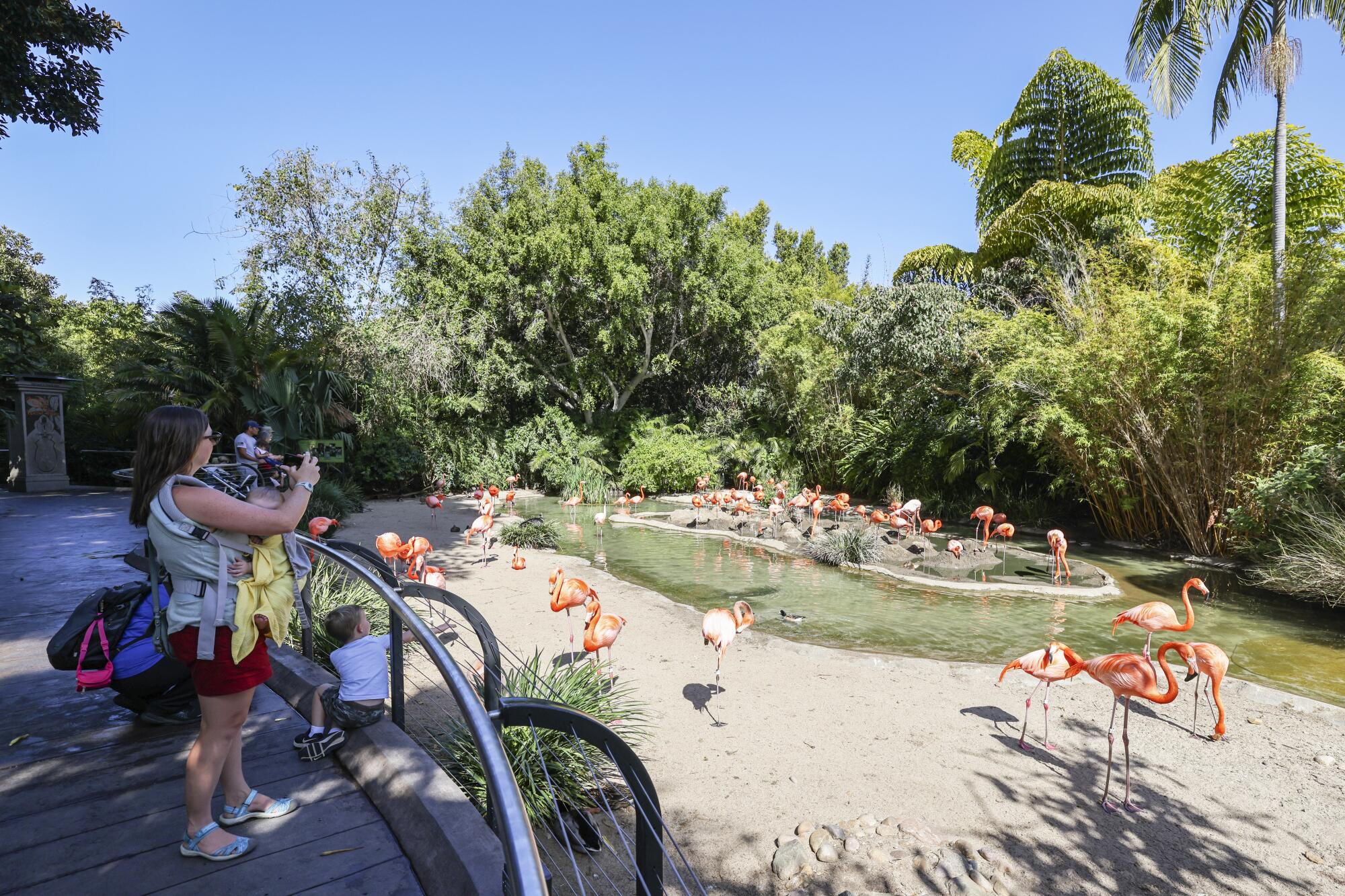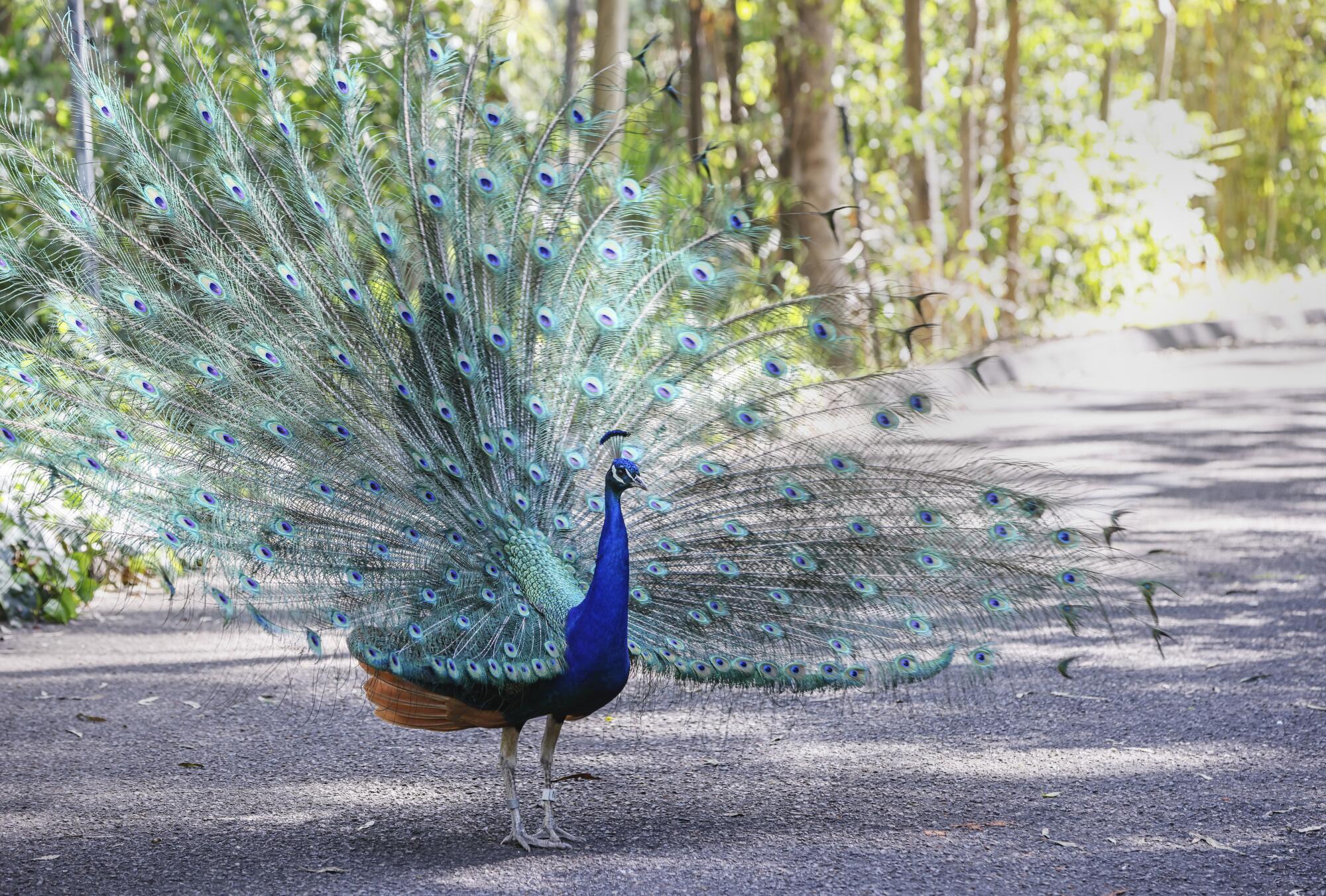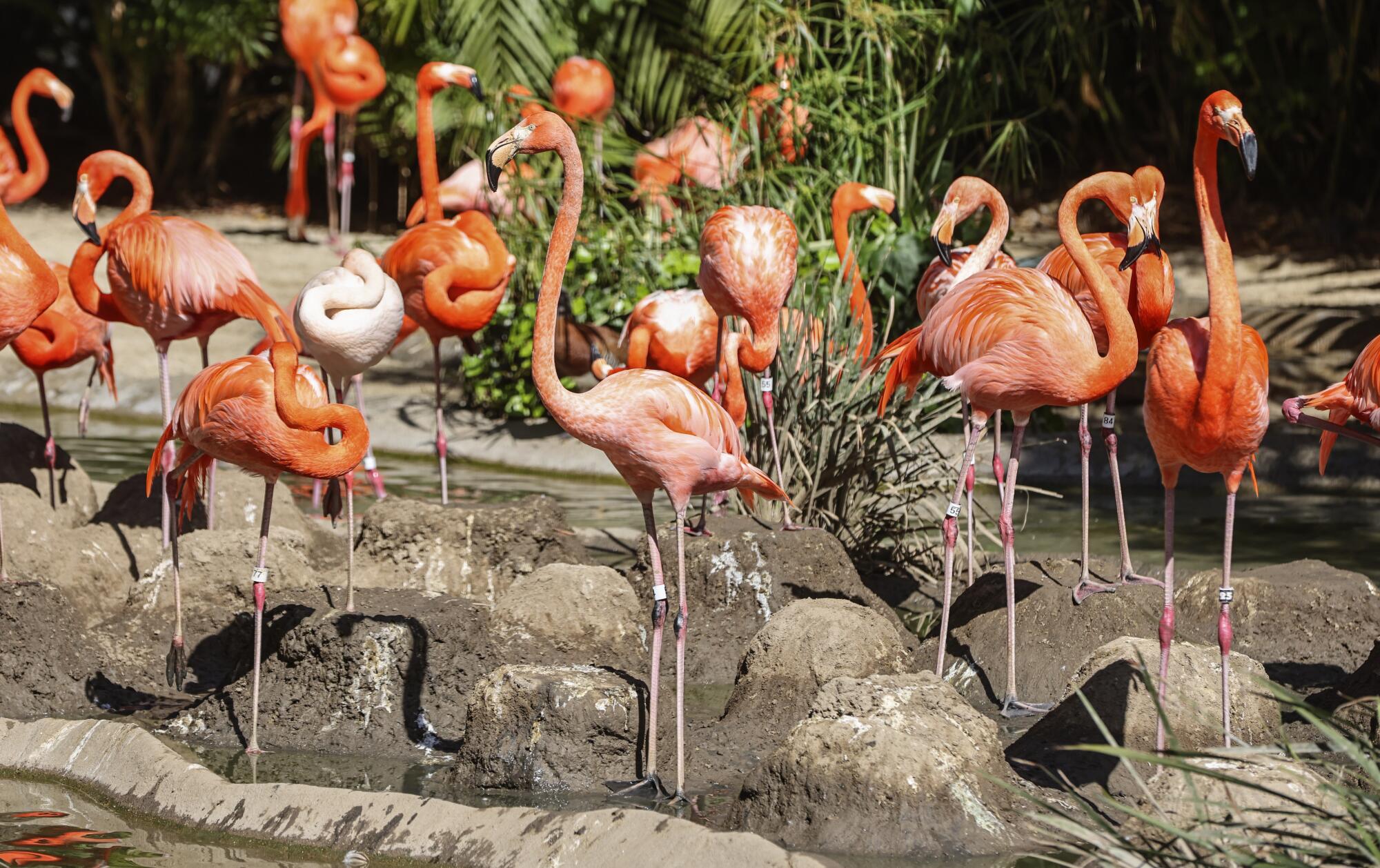
The outbreak has spread to more than 30 states; two zoos reported cases of the highly contagious virus.
SAN DIEGO — As a highly contagious avian flu spreads across the country, officials at the San Diego Zoo and the San Diego Zoo Safari Park are taking steps to try to prevent any of the 3,700 birds in their care from getting infected.
H5N1 highly pathogenic avian influenza was first detected in wild birds in late December and early January in North Carolina and South Carolina. The first outbreak in a commercial turkey flock was discovered in early February in Indiana.
Since then, the virus has spread across more than 30 states — as far west as Utah — and has resulted in more than 27 million chickens, turkeys and other birds being destroyed.
On Thursday, federal officials confirmed two U.S. zoos had reported cases of the virus in their collections. A U.S. Department of Agriculture spokesperson declined to release any details, including which zoos were involved. A federal database indicates the virus also had been found in more than a dozen dead wild black vultures at the Brevard Zoo in Florida since February.
Even before the confirmed cases, concern about the damage the virus could wreak on rare and endangered species had zoos across the country rolling out safety measures.
The Maryland Zoo last month moved birds it considered “more likely to come in contact with migrating waterfowl” indoors — including penguins, which had been housed in a habitat open to the sky. Zoos in Houston, Milwaukee, Chicago and other cities have taken similar steps.
“With extreme transmission of highly pathogenic avian influenza across the United States in both poultry and wildlife, facilities are going to be in full response to protect their birds for at least the next couple of months, until transmission decreases,” Rob Vernon, spokesperson for the Assn. of Zoos and Aquariums, said in a statement. “Especially with critically endangered and threatened birds in our care, [association] members default to doing everything possible to mitigate risk to these incredibly important birds.”
With its water features and abundant food, zoos are a haven for what some refer to as “freeloader birds.” One of the first steps many parks are taking is to make their properties less attractive and accessible to wild birds.
In San Diego, ponds could be drained and food trays left out only for short times. Netting could be strung over exhibits such as the flamingo habitat, located near the entrance of the Balboa Park attraction, to keep wild birds out. The zoo’s colorful peacocks, which freely wander the grounds showing off their iridescent tail feathers, would probably lose their walking papers and be moved indoors.

Areas considered too large to net — like the sprawling habitat at the Safari Park that houses African crowned cranes along with rhinos and giraffes — would see bird species moved indoors to exhibits or quarantine space.
A team is looking at each bird to determine the best options, said Hendrik Nollens, vice president of wildlife health for the San Diego Zoo Wildlife Alliance. “Each scenario, each habitat presents its own challenges as to what can be implemented,” Nollens said.
He said the two parks have enough exhibit and quarantine space to house birds indoors without doing any new construction.
“Nobody knows where or when this virus may spread to next,” Nollens said. “For us, we are preparing as if it will be here in San Diego — so we are preparing to be ready to have all protective measures deployed.”
Birds shed the virus through droppings and nasal discharge.It can be spread through contaminated equipment, clothing, boots and vehicles carrying supplies.

State and federal agencies move quickly when testing reveals infections.
“Quickly eliminating infected birds reduces the amount of virus in the environment and minimizes the risk of the disease spreading to and killing other birds,” Michael Stepien, spokesperson for the U.S. Department of Agriculture’s Animal and Plant Health Inspection Service, said in an email.
However, the agency does not order the euthanasia of HPAI-positive captive wild birds or zoo avian collections.
“If a zoo wanted to treat an infected bird, the state could allow them to do so with adequate isolation,” said USDA spokesperson Lyndsay Cole. If domestic poultry at a zoo tests positive — like ones in a farm exhibit with chickens — those birds would all be euthanized, she said.
San Diego Zoo Wildlife Alliance officials say its parks have long had “biosecurity” measures in place, such as routinely sanitizing equipment and toys and conducting health assessments and quarantining animals before they are introduced to other zoo animals.
If the virus is detected in commercial poultry operations or migratory birds in Southern California, the two parks would coordinate their response with county, state and federal regulators. In addition to netting outdoor spaces and halting public access to aviaries, employees probably would be required to wear N95 masks and paper gowns when they come in contact with birds, while undercarriages of vehicles making deliveries would be sprayed with a disinfectant.
The zoo’s planning largely follows how it has responded to the threat of virulent Newcastle disease and avian flu in recent years.
The two parks are home to a number of endangered birds, including the California condor, the Egyptian vulture and African penguins. Protective measures would cover all the birds — even those that aren’t rare — because the parks don’t want to lose even one bird in their collections.
“We can’t have avian influenza in any of our birds and that is really the goal,” Nollens said. “There is no favoritism that I like [this breed] the best, or they are the most endangered. Our goal is not to let this virus into our flocks.”
The Associated Press contributed to this report.
More to Read
Sign up for Essential California
The most important California stories and recommendations in your inbox every morning.
You may occasionally receive promotional content from the Los Angeles Times.











